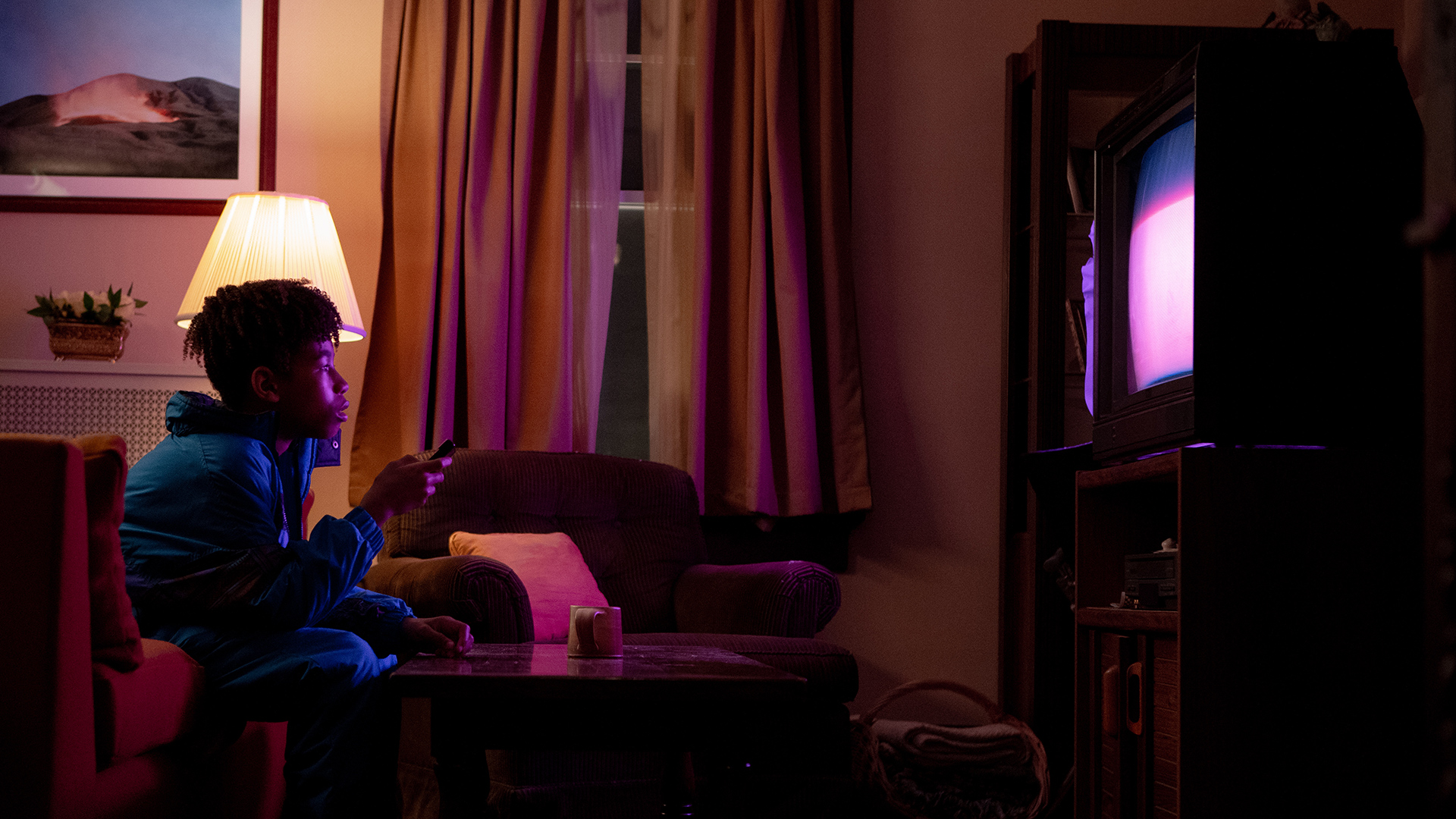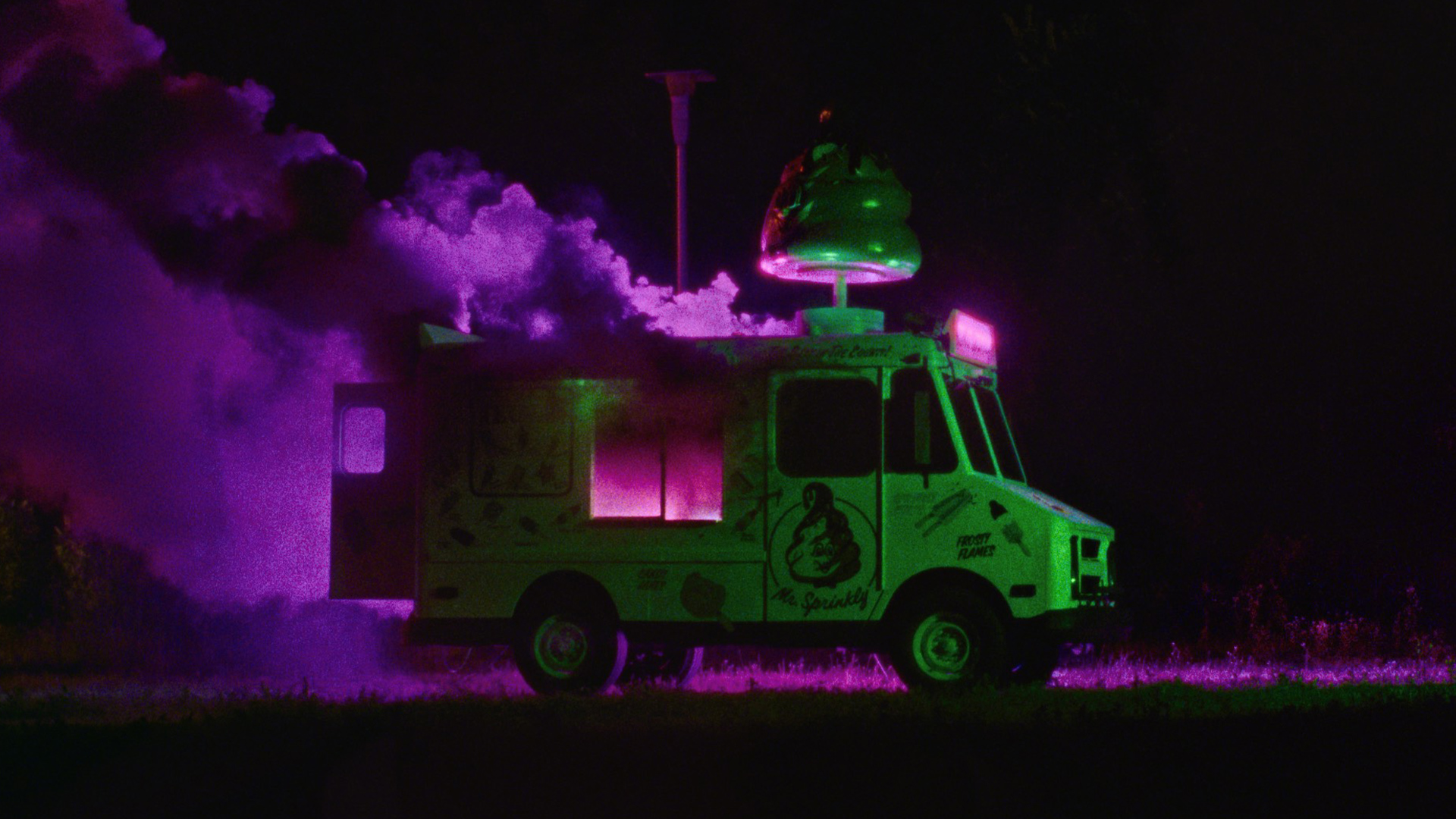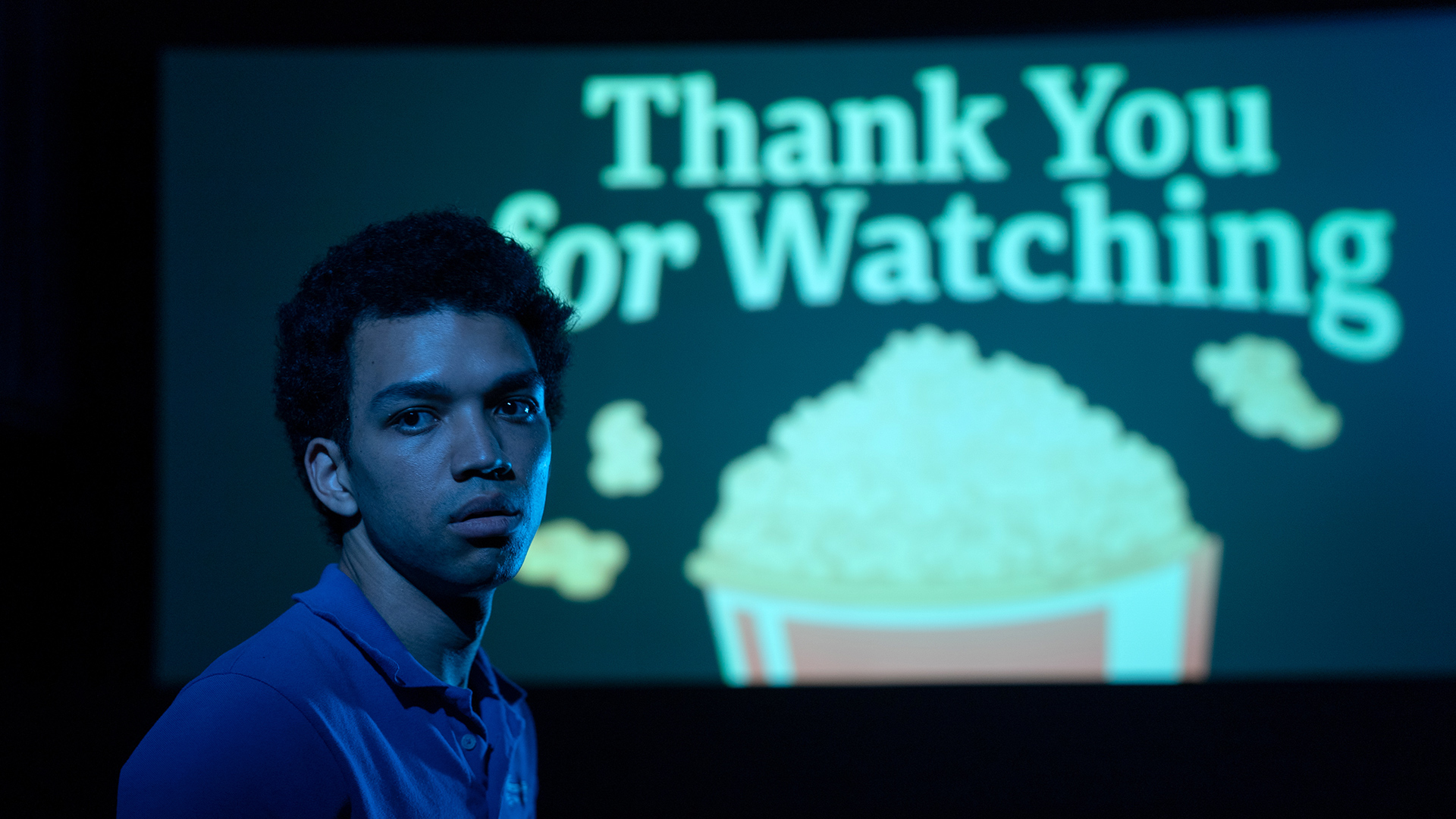You’ll find something in I Saw the TV Glow: or more accurately, it may find you

A visually stunning film about loners connecting over their shared love for a cult TV show gives way to something much deeper and emotionally resonant in I Saw the TV Glow. It’s the best kind of personal film, says Rory Doherty, a transmission directly from filmmaker to the audience member who needs it the most.
Discovery is central to I Saw the TV Glow, the third feature from Jane Schoenbrun. In all of writer-director Jane Schoenbrun’s work, uncovering truth about ourselves by scouring and disentangling unorthodox archives is a recurring theme, visible in both We’re All Going to the World’s Fair, an intimate, prickly drama about a teenage girl leaning into an online creepypasta collective, and A Self-Induced Hallucination, an archival doc sourced entirely from online videos relating to the internet folklore character Slenderman. But with I Saw the TV Glow, Schoenbrun’s step into mainstream circles fixates on the transformative nature of discovery with such focused energy that it’s a (welcome) surprise that chunks of the story are left to interpretation when the credits roll.
Owen (Justice Smith) is just another dispossessed, lonely seventh grader living in 1990s Anywhere, America when he meets ninth grader Maddy (Brigette Lundy-Paine) and she introduces him to “The Pink Opaque”, a young adult fantasy show where dark, magical realms converge with mundane suburbia that has them both rapt in the same way that 90s teens went ape over Buffy the Vampire Slayer.
In the show (which Owen has to watch in Maddy’s basement or on her smuggled VCR tapes) a cross-county friendship between two psychically-linked girls, Isabel (Helena Howard) and Tara (Lindsey Jordan), is the only thing standing in the way of the Midnight Realm, a plain of demons and darkness led by the Big Bad, Mr. Melancholy (Emma Portner).

Early fears that I Saw the TV Glow will rely on media-savvy, TVtropes.org-adjacent language to express its coming-of-age story soon evaporate. Terms like “Big Bad” and “Monster of the Week” make it appear that “The Pink Opaque” is as digestible as any dated 90s TV phenomenon (even though its specialness is always stressed by Maddy, whose perspective, TV screen, and video tapes Owen ingests the show through). But as Owen’s asphyxiating interior world and the fabric of the show start moving in tandem, our focus on the narrative construction of “The Pink Opaque” is eclipsed by an otherworldly, phantasmagorical dread—mixed with an aching sense of possibility that reaches out of the TV screen, Videodrome-style, to invite us somewhere impossible.
Because TV Glow unfolds with such a patient, unwavering momentum, like a fairytale with a predestined ending, it’s difficult to talk about where this impossible place is without making the reveal sound simplistic, or risk spoiling the film’s greater resonance. When we learn where the film is going to take us—as detailed in a devastating straight-to-camera address by Maddy who’s returned from an eight-year-disappearance—it feels shocking because the opening forty minutes have lulled us into a faux-nostalgic space where we’ve witnessed the spiritual and psychological impact the discovery of “The Pink Opaque” has had on this timid and likely closeted young man.
Vibrant lights fill I Saw the TV Glow: purple, green, reddish hues that illuminate its core cast in a near-constant wash of vivid colour that underlines just how expressive Smith and Lundy-Paine’s faces can be. On top of an entrancing score from Alex G, Schoenbrun has assembled a euphoric crew of artists on the soundtrack, whose songs fill every empty crevice of the scenes they play in. An in-person performance by Phoebe Bridgers and Sloppy Jane is memorable, but the highlight is Caroline Polachek’s Starburned and Unkissed which triumphantly blasts through the halls of Owen’s high school as on-screen notations and doodles show the loving paratexts Maddy gives her new “Pink Opaque” convert.
As TV Glow skips ahead through time, and the suburban fantasia blurs identities and elides clean genre classifications, the discoveries that Owen and Maddy make become explicitly fantastical. But because Schoenbrun makes every threshold-crossing so vividly transubstantial in nature, we’re hypnotised by the possibility that, maybe, we could actually access a fictional world, and it might even cure our deepest malaises.

The queerness of TV Glow is unmistakable; Schoenbrun, a trans/non-binary filmmaker who has made transness central to both their fiction films, has built a surrealist fantasy on top of a direct, coherent metaphor for trans becoming, channelling the horror of fearing and resisting liberation. TV Glow isn’t so effective because it compromises a trans experience to make it digestible for mainstream, cisgender audiences, but because it forces everyone on its wavelength to recognize the ways they deny themselves, consciously or not, the chance to nurture and express hidden parts of ourselves every single day.
The stakes for this denial are clearest in the film’s second half, where Schoenbrun executes two back-to-back sequences of existential suspense and abject body horror that render you fragile and quaking during the bold final steps of Owen’s journey. Schoenbrun has crafted the best kind of personal film—a transmission directly from filmmaker to the audience member who needs it the most with a brazen message and affecting execution. You will find something in I Saw the TV Glow; or more accurately, it may find you.



















